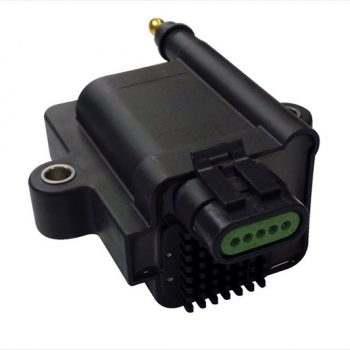Ignition Technology
pRECISION AND POWER
The Delco "Kettering" points system was the first commercially battery based ignition, introduced on the 1910 Cadillac automobile. Since then little has changed and it could be argued that poorly made replacement parts have hurt the reputation for the reliability it once had. This system has all but faded away and has been obsolete for decades.
Electronic "Hall Effect" and transistorized ignitions became common in the late 60's and early 70's and reduced maintenance while increasing performance. The next technology wave includes smart coils, tiny circuits, and computer assisted tuning.
_________________________________________________________
Electronic "Hall Effect" and transistorized ignitions became common in the late 60's and early 70's and reduced maintenance while increasing performance. The next technology wave includes smart coils, tiny circuits, and computer assisted tuning.
_________________________________________________________
- We use crank/cam triggers to fit most applications.
- We strive to provide reliable options for our customers.
- We can offer dumb or "smart" coils to suit your needs.
we use readily available performance coils
We use products from various companies based on their customer support and product reliability.
The technology in motorsports constantly changes but we prefer to use products that are known to be leading edge to chase the 100% efficiency target.
We offer systems that can control up to 12 cylinders using a variety of trigger systems. They are capable of managing ignition, EFI, data logging, and other critical things. If you are serious about efficiency, especially on performance vehicles, we now offer great solutions with more coming soon.
The technology in motorsports constantly changes but we prefer to use products that are known to be leading edge to chase the 100% efficiency target.
We offer systems that can control up to 12 cylinders using a variety of trigger systems. They are capable of managing ignition, EFI, data logging, and other critical things. If you are serious about efficiency, especially on performance vehicles, we now offer great solutions with more coming soon.
Intake & Exhaust Technology
Stock cast iron manifolds were designed for long life, reasonable operation in a variety of climates, and affordable cost. They were never intended to be high performance. We strive to solve the following problems with stock cast manifolds:
Commonly sold headers are built for looks with no math involved.
Part of the problem is lack of space for a proper intake and exhaust. But why buy a header that doesn't fix the real problem? Do it once... do it right!
- Unequal length runners make cylinders work against one another
- Excessively short runners that reduce scavenging
- Mismatched ports
- Excessively large factory exhaust diameter
- Heavy and brittle material that is often 60+ years old
Commonly sold headers are built for looks with no math involved.
Part of the problem is lack of space for a proper intake and exhaust. But why buy a header that doesn't fix the real problem? Do it once... do it right!
